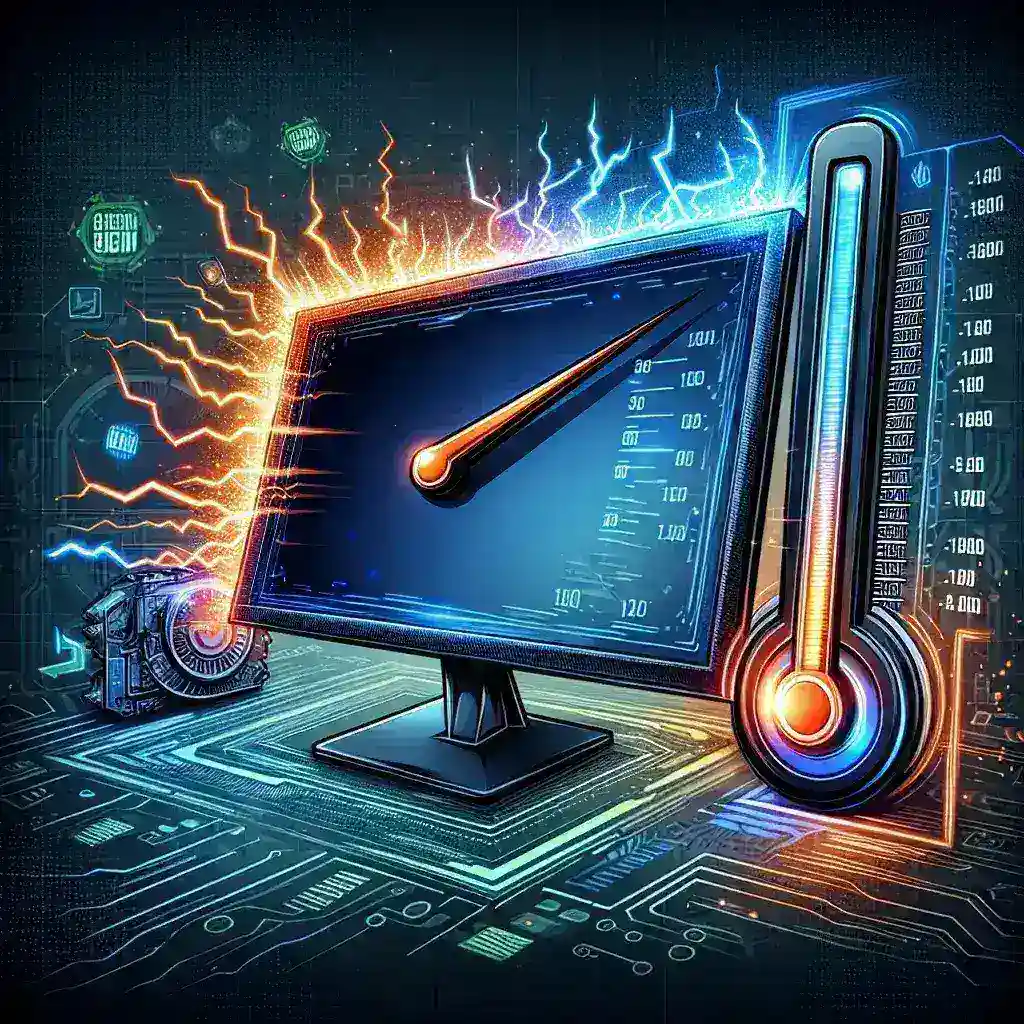Introduction to Overclocking an LED Monitor
Overclocking, a term widely used in the computing world, typically refers to increasing the clock rate of a computer component beyond its certified limits. While often associated with CPUs and GPUs, overclocking can also be applied to LED monitors to enhance their performance. This article delves into the intricacies of overclocking an LED monitor, the benefits, potential risks, and a step-by-step guide on how to do it correctly.
What is Overclocking?
Overclocking essentially means running hardware components at speeds higher than their factory-set specifications. For LED monitors, it involves increasing the monitor’s refresh rate, measured in Hertz (Hz), to a value higher than its official rating. For instance, pushing a 60Hz monitor to operate at 75Hz.
| Term | Definition |
|---|---|
| Overclocking | Running components at speeds higher than factory settings. |
| Refresh Rate | The number of times per second a monitor updates its display, measured in Hz. |
Benefits of Overclocking an LED Monitor
There are several advantages to overclocking an LED monitor, primarily related to improving the display experience.
- Enhanced Visuals: A higher refresh rate means smoother visuals, which is particularly beneficial in fast-paced gaming scenarios or when watching high-definition videos.
- Reduced Lag: Overclocked monitors can offer lower input lag, leading to more responsive controls in gaming or real-time applications.
- Cost-Effective Upgrade: Instead of purchasing a new high-refresh-rate monitor, overclocking offers a potential upgrade at no additional financial cost.
Risks and Downsides
Despite the benefits, overclocking does not come without its drawbacks. Here are some potential risks and issues to be aware of:
- Voided Warranty: Overclocking can void manufacturer warranties, as it pushes the hardware beyond its tested capabilities.
- Reduced Lifespan: Running the monitor at higher refresh rates can lead to increased wear and tear, potentially shortening its operational lifespan.
- Overheating: Higher performance levels generate more heat, which could cause overheating if the monitor’s cooling capacity is insufficient.
- Display Issues: Overclocking may result in visual artifacts, such as screen tearing, flickering, or ghosting, adversely affecting the visual experience.
- Instability: An overclocked monitor can become unstable, leading to crashes or failure to display properly at the desired refresh rate.
How to Overclock an LED Monitor
Step 1: Check Compatibility
Before attempting to overclock, ensure that your monitor and graphics card support higher refresh rates. Not all monitors are capable of being overclocked, and attempting to do so on incompatible hardware can lead to damage.
Step 2: Access Control Panel
Access your computer’s graphics control panel. For Nvidia users, this would be the Nvidia Control Panel, and for AMD users, the AMD Radeon Settings. These tools allow customization of display settings, including refresh rates.
Step 3: Create a Custom Resolution
Navigate to the tool’s custom resolution settings. For Nvidia:
- Open Nvidia Control Panel > Display > Change Resolution > Customize > Create Custom Resolution
For AMD:
- Open AMD Radeon Settings > Display > Create Custom Resolution
Here, you can set a higher refresh rate than the default.
Step 4: Incremental Increases
Increment the refresh rate gradually, starting slightly above the default setting (e.g., from 60Hz to 65Hz). Apply the changes and test the monitor’s response. If stable, you can continue to increase the refresh rate incrementally.
Step 5: Monitor Performance
Use real-time performance monitoring tools to check for issues such as visual artifacts or overheating. If problems arise, revert to the last stable refresh rate or factory settings.
Step 6: Test and Validate
Once a stable and satisfactory refresh rate is achieved, validate the performance by running display stress tests and using the monitor for extended periods to ensure continued stability.
Conclusion
Overclocking an LED monitor can significantly enhance display performance, particularly for gaming and high-definition content viewing. However, it comes with its own set of risks, including potential damage to the monitor and voided warranties. By understanding these risks and following a careful, incremental approach, users can often gain the benefits of overclocking without adverse effects. Always ensure that your hardware supports overclocking, and monitor the display’s performance closely to avoid any long-term damage.

